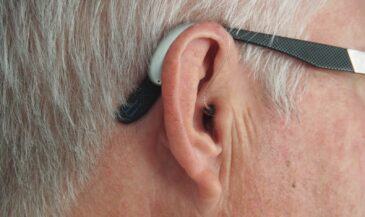By Dr. Christopher Kent
In a world where we are faced with antibiotic resistant bacteria, and viral diseases where effective treatments are lacking, the role of chiropractic care in allowing for optimum immune system function deserves thorough exploration. A logical first step in this process is learning how the nervous system and the immune system interact.
Elenkov et al [1] completed a comprehensive review of the literature summarizing our current understanding of the interplay between the nervous system and the immune system. “The brain and immune system are the two major adaptive systems in the body. During an immune response, the brain and the immune system ‘talk to each other’ and this process is essential for maintaining homeostasis…Two pathways link the brain and the immune system: the autonomic nervous system (ANS) via direct neural influences, and the neuroendocrine humoral outflow via the pituitary….the ANS regulates the function of all innervated tissues and organs throughout the vertebrate body with the exception of skeletal muscle fibers.”
Nonsynaptic transmission
The authors note, “Since Sherrington’s classic work in 1906 it has became a doctrine of neurophysiology that the synapse, a part of the surface of separation between neurons, is the primary site of neuronal information processing…Now, however, it is clear that, in contrast to some regions of the CNS and particularly to the neuromuscular junction, where classical synapses are observed, postganglionic neurons in the periphery innervating blood vessels, vas deferens, and smooth muscle terminate in a network of varicose areas (boutons en passant) that lack synaptic contact with their target cells.
“Similarly, in Auerbach’s plexus of the gut, or the cerebral cortex where norandrenergic axon terminals do not make synaptic contacts with cholinergic axon terminals, norepinephrine should diffuse over relatively long distances before modulating the release of acetylcholine from the cholinergic neurons. It has been shown that in the CNS, the monamines (norepinephrine, dopamine, serotonin) released from nonsynaptic varicosities into the extracellular space, diffusing far away from the release sites, make functional interactions with other neurons without making synaptic contacts.
“Nonsynaptically, the neurotransmitter is released from free nerve endings into a large extraneuronal space, with no postjunctional specializations, and hence, the neurotransmitter diffuses a considerable distance before interacting with receptors on target cells.”
Other nonsynaptic messaging may occur via axoplasmic flow, ephapsis, volume transmission, and field effects.
Tone
According to Elenkov et al, synaptic neurotransmission at the neuromuscular junction, is short and tonic. In contrast, nonsynaptic neurotransmission is slow and tonic. These tonic transmissions are thought to be useful in controlling autonomic functions and the balance between the sympathetic and parasympathetic nervous system.
D.D. Palmer described the relationship between “tone” and the dynamics of health and disease: “Life is an expression of tone. Tone is the normal degree of nerve tension. Tone is expressed in function by normal elasticity, strength, and excitability…the cause of disease is any variation in tone.” [2]
Presynaptic modulation
Elenkov et al [1] state, “The release of transmitters from varicose axon terminals in response to action potentials is a very random process subject to presynaptic modulation through stimulation of receptors located in the varicose axon terminals.”
These presynaptic receptors are classified as follows:
1. Autoreceptors, which receive messages by transmitter released from the same neuron, and are involved with negative or positive feedback modulation;
2. Homoreceptors, that receive signals from the adjacent neuron, and whose transmitter is the same neuron where the homoreceptors are located.; and
3. Heterorecptors, located on axon terminals that do not manufacture transmitters capable of exerting an effect on these receptors, but receive messages by transmitters from other neurons.
Conclusion
The authors conclude, “In summary, the immune system is not autonomous; the sympathetic nervous system and hypothalamicpituitaryadrenal axis may represent major communication channels through which the CNS superimposes its control on the immune system. Better knowledge and understanding of the physiology and pathophysiology of the sympatheticimmune interface may help the development of new therapeutic strategies for common human diseases.”
From a chiropractic perspective, the potential application of the understanding transcends the treatment of disease. It embraces a strategy for removing interference with the ability of the individual to effectively experience the spectrum of life.
References
1. Elenkov IJ, Wilder RL, Chrousos GP, Vizi ES: “The sympathetic nervean integrative interface between the two supersystems: the brain and the immune system.” Pharmacol Rev 2000;52:295638. http://pharmrev.aspetjournals.org/cgi/reprint/52/4/595.pdf
2. Palmer D: “The Chiropractor’s Adjustor,” Portland, OR. Portland Publishing House, 1910






























































































































































